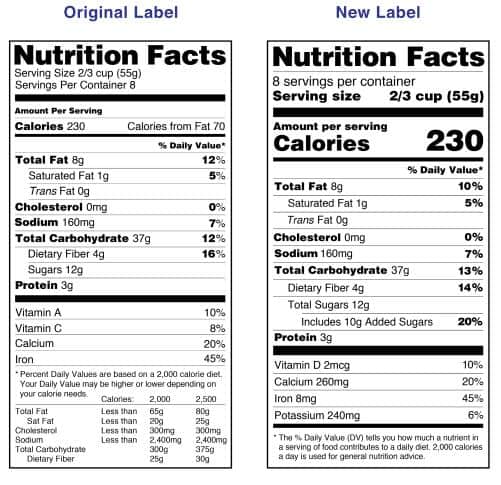This year, the growth of office printing in the United States is likely not to increase, but the opportunity to meet home printing needs is expected to continue.
Suitable for printing
Last year, when the COVID-19 pandemic forced many companies to switch to working from home, the situation did not seem to be good for the already struggling printing industry. However, although traditional office printing has dropped predictably, the opposite has occurred in countless home offices. In fact, during the pandemic, the demand for home printers and consumables has surged, even though many printing solution providers have shown greater interest in support and service products for remote users. Keith Kmetz, vice president of imaging, printing and document solutions at research company IDC, said that eventually, in the modern work environment, the demand for certain parts of the printing industry has increased, which is considered “unusual.” There is no doubt, Kmetz said, “Printing is still something that both office users and home users want to have.”
This has a wide-ranging impact on solution providers-from ongoing opportunities around printers that work from home to opportunities to extend managed printing service contracts to include home environments. For the printing industry as a whole, these developments are also accelerating existing trends, such as the growth of ink delivery services, concerns about printing safety, and the shift to A4 and multi-function devices. At the same time, there are signs that as companies re-use more office space this year, the prospects for printing in the office will improve by 2021.
As part of CRN’s 2021 Printer Week, we have compiled the top ten printer industry trends worth watching this year.
Continue to pay attention to home office printing (WFH)
Kmetz said that although the COVID-19 pandemic has caused a large number of jobs to be transferred to homes, a recent IDC survey showed that even if normal conditions are restored, there will still be a large number of employees working from home. He said: “We will return to the office because we still like social activities, but there are still a lot of work from home.” Survey data shows that the number of people working from home is about 10% of the pre-pandemic market, but this will be close to the post-pandemic market. 30% of it. He said: “This is an exponential change, and it will have an impact on the printing market.”
Kmetz said that while bringing major changes to office printing, the arrival of a “mixed” workforce also means continued reliance on and opportunities for home office printing. He said: “There is a clear difference between the equipment we have at home and the work experience in the office.” “Moreover, if we want our employees to achieve the highest level of productivity, we need to address several related IT and IT issues. Printing-related challenges.”
Of course, one of these challenges is to allow home users to get the level of support and service they are used to in the office. This has been the focus of solution providers such as MARCO since St. Louis Park, Minnesota. Dan Larkin, Director of MARCO Managed Printing Services, said this is the beginning of the pandemic. The solution provider has been providing services from remote support to repair for its hosted printing service customers, which is part of the “deliverable”. He said that the strategy of providing services to remote and office users will continue to be carried out in MARCO, while mixed employees will stay here. Overall, “this will force companies and service providers to include remote strategies and deliverables as part of their products,” Larkin said.
WFH hardware opportunity
Many solution providers stated that they have discovered new opportunities in providing customers with printers suitable for home environments. NCS sales director Matthew Cooke said, for example, during the pandemic, NCS Technologies in Gainesville, Va., required “small printers for home employees to use” demand “rapidly.” Cook said: “Almost every day, I will receive a request for a printer quote for printing at home.” “I feel it will last for a while.”
In fact, some printer vendors have begun to address the business printing needs of working from home by releasing new models that meet the unique needs of this environment. The new printer equipment is designed to meet business goals, such as providing security and manageability, while providing a smaller footprint and lower prices than standard commercial printers. This is critical, because for many companies, cheap home printers are more difficult to support and more susceptible to security issues, Kmetz said.
Returns for office printing, but there are changes
Kmetz said that it is expected to return to a higher level of office usage by 2021, resulting in a moderate increase in print volume in 2021 compared to last year. He said: “We expect to actually grow.” “But it will not be very large. And the dependence on equipment and pages will be lower than before popular. It will change. I think the company will study printing more carefully. .”
Therefore, solution providers should consider “Where is the current market and what new opportunities are there? And how can I restore my business to the best of my ability to cater to changes in the market?” Kemetz said. “We know the office will look different.”
On the positive side, at least in the short term, office demand for printing hardware may be somewhat suppressed. “There are planned acquisitions and acquisitions in 2020, and companies have stated that we are not planning to update our MFP fleet now-no one is in the office,” Kmetz said. “So (this year) they will take care of this.”
The outlook for hosted printing services has improved
The solution provider said that returning to the office and continuing home printing under a hosted printing service contract will improve MPS’s prospects in 2021. Joshua Justice (pictured), president of JustTech, based in La Plata, Maryland, said that in March, customer print volumes began to recover at a faster rate than he expected. He said: “March is indeed a turning point.”
Jiji said that the managed printing service provider now expects to increase its revenue by 20% this year after being flat in 2020. He said: “As the print volume picks up, we should be stronger than ever.”
Similarly, at MARCO, Larkin stated that the forecast for managed print services in 2021 is “very very strong-from a quantitative perspective, from a unit perspective, from an overall demand perspective… I am very optimistic about MPS.” /p>
A4, MFP shifts in the office accelerated
Kmetz said that the two major shifts in the office printing market, which has been going on for many years, to A4 and multi-function devices will accelerate as office usage picks up this year. This means faster transfer from single-function printers and A3 copiers. Kmetz said: “As companies seek “lower cost and smaller equipment”, I think the transition from A3 to A4 will accelerate. “But you will still have some of the powerful features that A3 equipment expects-duty cycle, finishing Wait. We have been following this trend. “
Similarly, companies will be more likely to choose multi-function devices that will combine the functions of single-function printers in the future, including printing, copying, scanning, and faxing. By combining so many functions into one device, multi-function devices can generally provide higher management efficiency and reduce costs.
Software is more important
According to a recent IDC survey, Kmetz said that it is clear that software components related to printing “will become more critical. This is what customers want.” Multifunction devices may be able to print and copy, but customers are now saying : “‘I want to be able to obtain this information and store it in the repository. I want to connect to the cloud and be able to use cloud printing management. I want to be able to print from my mobile phone. I hope that capture, document management and other functions will become what I use Part of the solution. I hope to be able to do these things because this is how I work now,” Kmetz said. “Obviously, the activity around collaborative technology is intensifying, so the MFP (printer) must also be a part of it.”
Focus on safety
Kmetz said that for companies seeking to provide a “real business environment” for domestic workers, they must have business-level printer functions, including functions around security. He said: “The house is not a safe bastion.” “If you want to invade someone’s work environment, it is much easier for people working from home now.”
Larkin said that printing is one of the areas that is often overlooked in the security field, even though it has begun to change. At MARCO, “Our fastest growing category today may be security. We have a chief information security officer and a security team-part of that team is dedicated to our printing aspect,” Larkin said. “People don’t really view the printer as a security risk, but this is one of the easiest backdoors for hackers.”
He said that the solution provider has been conducting security assessments of customers, which is a way to re-engage with existing customers, including identifying older printers that are at risk of security and providing suggestions to solve the problem. Larkin said: “This is an endpoint on their network and needs to be treated this way.” He said that only with so many people working from home, this becomes even more critical. “That’s it, how do we provide them with the same level of service as our own interior walls?”
Ink service growth
With the shift to work from home, printing giant HP has achieved a breakthrough year for its Instant Ink home ink delivery service in 2020. The subscription service monitors printer usage and automatically delivers ink to home so that users can avoid running out of ink. HP reports that as of the end of January 2021, Instant Ink has 9 million subscribers, compared with 5 million subscribers before the pandemic.
In an interview with CRN, Tuan Tran, President of HP Imaging, Printing and Solutions (pictured), said that HP “always has two value propositions for Instant Ink, one is cost and the other is convenience.” But in 2020 “The convenience value proposition went up in 2016 because people didn’t want to go back to the store even if they wanted to,” Tran said. “They want the ink to be just self-monitoring. This helps our channel partners to attach Instant Ink 2X to the pre-pandemic 3X. Printer shipments have skyrocketed, but Instant Ink orders have increased dramatically.”
Kmetz said that he hopes that ink delivery services will become a broader trend in the printing market besides HP. For example, Canon now offers its Easy Ink Delivery service, which aims to simplify the reordering of ink (although delivery will not happen automatically like Instant Ink).
For domestic workers, if the ink in the project runs out, “productivity may drop sharply”. Having a mechanism like HP to actively send ink cartridges can help avoid catastrophic situations. I think you will also see more from other manufacturers. “
Development of printing solution providers
Printing solution providers who hope to succeed in 2021 and beyond will need to adapt to the changes that have already been initiated under pandemic conditions. He said this means meeting the changing needs of office and home users.
“It gives providers and channel partners an opportunity to respond to this and have the foresight to say,’Well, I will not use the old way. The pandemic introduces new ways of working, and the future of work Significant changes have been made. Therefore, we will develop these types of products, services and solutions in a direction that meets this vision for the future,” Kmetz said. “In contrast,’Let’s go back to 2019.’ Because if you try to do this, you will definitely miss this boat. This market no longer exists. It has undergone substantial changes and needs to be adjusted. .”
He said that, in particular, if the solution provider “has a customer base with a continuously dispersed workforce, it becomes very important to have tools that can manage or at least diagnose problems remotely,” he said.
Larkin said that providing services to domestic household users should be part of this strategy, and to provide services to printing solution providers in 2021 (if not yet implemented). He said: “I want to say that if they did not consider [WFH printing strategy] last year, it would be foolish not to consider them this year.”
Printing is still essential
Kmetz said that even with increasing emphasis on numbers, there is still a strong value proposition for using paper for multiple purposes instead of relying on digital content. He said the demand for home printing during the pandemic has proven this. Kmetz said that, generally, “recipients respond better to a piece of paper than to the digital format of the document.” “The physical presence of this information makes people respond better to it than to email.”
Larkin said that for many companies, printing “is still an integral part of the corporate workflow. And I don’t think this will change anytime soon. I remember when I first entered the industry in 2003, The company is talking about this paperless office environment. It was almost 20 years ago, and we have not reached that level.”




